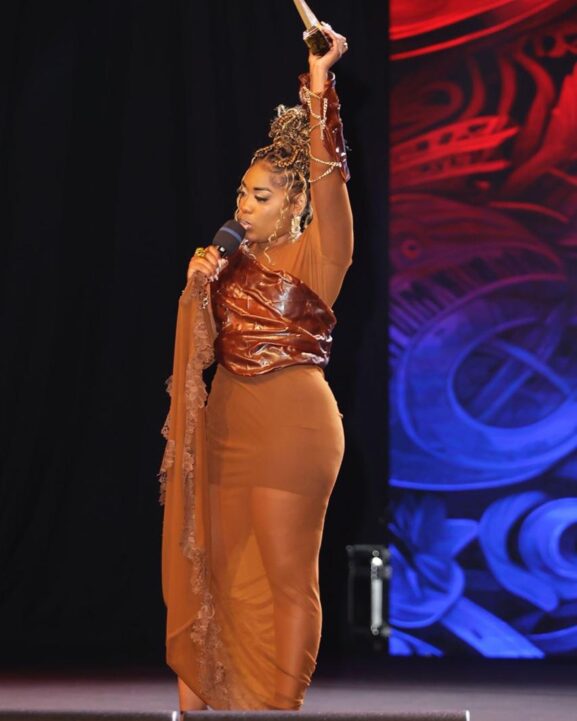Funaná – Cape Verde’s national heritage
This past Sunday, April 14, funaná was elevated to national heritage. This recognition is due to the fact that funaná is one of the greatest references of traditional Cape Verdean music, and also because it is deeply rooted in the traditional culture of the Cape Verdean people.
Although there are many explanations for the meaning of the name “funaná”, it is known that the name of this type of music is a combination of two names: Funa and Naná, and that perhaps funaná began with these two people.
Funaná is believed to have emerged in the interior of Santiago, the central island of the archipelago, in the late 19th or early 20th century. And throughout its history, this musical genre has undergone various transformations, incorporating elements from other musical genres such as the mazurka, the waltz and the samba.
And the artistic group Bulimundu was the one who revolutionized funaná, taking it away from the traditional style of iron and harmonica and into an innovative style with a mixture of guitar and drums.
In the 20th century, funaná gained even more popularity, becoming a symbol of Cape Verdean culture and resistance against colonial oppression. And with the passage of time, this musical genre has undergone some evolutions and new musical influences, which has led to the emergence of the well-known and famous “cotxipó”, a more “up-to-date” version of funaná, so to speak.
However, it must be said that between funaná and batuke, two traditional Cape Verdean musics, batuke is the oldest and best known. The recognition given to funaná this weekend is therefore due to the valorization of this musical genre as an important part of the development and preservation of national and even international culture.
And we open a parenthesis here to say that the island of Santiago is the only one that produces and promotes this traditional musical genre, which is now a national heritage site.
Characteristics of funaná
Funaná has a binary and variable rhythm, which can be accelerated or more moderate. This unique feature creates a pulsating, contagious sensation that invites you to dance. The diatonic accordion, known as “gaita” in Cape Verde, is the central instrument in funaná. Its vibrant melody and striking harmonies define the authentic sound of the rhythm.
The ferrinho, a metal percussion instrument, sets the funaná rhythm with precision and energy. Its percussive sounds guide the dance and keep the beat contagious.
The funaná melody is characterized by notes that rise and fall, creating a dynamic sound full of emotion. Singers can use the “sforzando” technique, emphasizing specific notes to enhance musical expression.
Funaná’s lyrics deal with a variety of themes from the daily lives of Cape Verdean people, from happiness and sadness to social criticism and reflections on life. Modern funaná also incorporates contemporary themes, portraying the country’s current realities.
More than just music and dance, funaná is the soul of Cape Verde, pulsating with contagious energy, irresistible rhythm and lyrics that narrate the realities of the Cape Verdean people.
The Funaná Dance
This musical style is a lively and contagious dance, where the hips and shoulders move to the rhythm of the music with energy and joy. It is therefore common to see a touch of playfulness and flirtation in the dancers’ movements.
Funaná can be danced individually, expressing individual freedom, or with a partner, creating moments of interaction and improvisation. Dancing in pairs also allows you to explore different choreographies and demonstrates the connection between the dancers.
Funaná is usually danced at social and cultural events for performances, as well as during celebrations such as weddings, baptisms, confirmation ceremonies or social gatherings.
It should be noted that funaná is considered one of the main symbols of Cape Verdean culture and identity and of its history. The rhythm and lyrics reflect the strength of the Cape Verdean people, their resistance, their achievements and their ability to overcome.
As a curiosity, here are some of the big names in funaná, such as Codê di Dona, Cema Lopi, Katxas di Bulimundu, Ferrro Gaita, Zeca de Nha Reinalda, Belo Freire, Catuta Branca and Ze Espanhol. It’s important to say that the latter has given a new dynamic to the creation of funaná and the dances, which has inevitably led to a move away from the traditional funaná.
However, despite the “innovations” made to funaná, one thing is certain: funaná still continues to please and enchant everyone who loves this unique, vibrant and contagious musical genre.


